Links:
IranVisitor.com
Blogs:
Bazaar Dispatch
Iran News Blog
Iran Travel & Tourism
Tools:
Calendar Converter

|
By: Bijan M. Sadeghi |
|
Shiraz: |
Shiraz has been the centre of Fars Province since the 7th century AD, and it has provided a capital for several Islamic dynasties. Its most important function, has been as a major artistic centre, synonymous with learning, nightingales, poetry, roses and at one time, wine. Today, it is an important University town, and has a population of approximately 1.1 million. The city was founded during the Achaemenian Dynasty, and under the Sassanians it became one on the main cities of the province of Fars. It soon came to be known as one of the leading centers of calligraphy, painting, architecture and literature.
Although Esfahan became the Royal capital under Shah Abbas I (1502 - 1722) the Safavid ruler, Shiraz remained a provincial capital, and attracted a number of European traders who exported its famous wine. During this period, Emam Gholi Khan the governor of Fars built a large number of palaces and other ornate buildings.
To many, Shiraz is one of the most pleasant cities in Iran, with its relaxed, cultivated and generous inhabitants, wide tree lined avenues, and a multitude of monuments, gardens and mosques.

Hafez' tomb is the closest to the town centre. Built in 1953 in a garden, the mausoleum is a small open pavilion; inside which is a marble tombstone with several of the poets' verses. One of the nicest tea-houses (chaikhaneh) in Shiraz can be found in the grounds, set around a rectangular pool. You can sit around on cushions sip a cup of tea, or rose water while reflecting on his poetry. Hafez spent most of his life in his native town and died there in 1389. He is considered the undisputed master of the ghazal, and his poems reflect a richness and a subtlety unequalled even by the other great talent, Saadi.

Saadi's tomb is in the north-east of Shiraz. Set in a pleasant garden, the present tomb was built in 1952 and replaces an earlier much simpler construction. Unlike Hafez, Saadi travelled extensively in Iraq and Syeria, where he was even taken prisoner by the Crusaders. Upon His return to Shiraz, Saadi wrote his most famous works, the Bustan (The Orchard) and the Golestan (The Rose Garden), which are moral tales written either in verse or in a mixture of prose and verse. Saadi is said to have died in 1290 at the grand old age of 101.
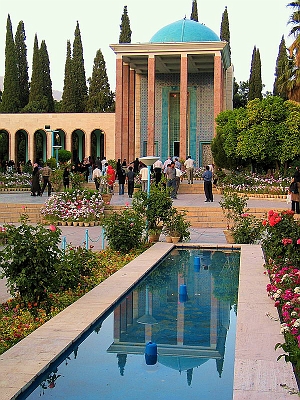
Shiraz's other key monuments are located on the south bank of the Khoshk River. The imposing citadel of Karim Khan with its four circular towers dominates the city centre. This well-preserved fortress was part of the royal courtyard in the time of the Zand dynasty. Today, it houses the municipal offices and is not open to visitors. Karim Khan laid out a landscape garden opposite the citadel, and one of its pavilions has been turned into a museum called Muzeh-ye Pars. This small octagonal building was once a reception hall, and then for a brief period it became Karim Khan's mausoleum. However, Agha Mohammed Khan (founder of the Qajar Dynasty) ordered the body to be removed.
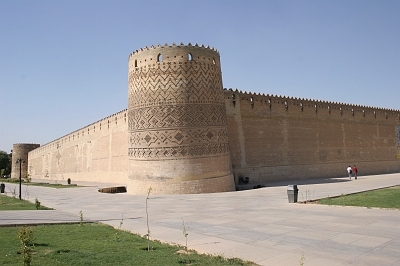
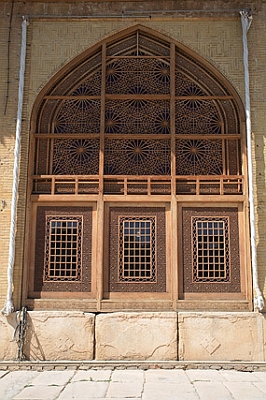
Shah Cheragh is a tomb of brothers Amir Ahmad and Mir Muhammad, both of whom were brothers of Imam Reza, who took refuge in Shiraz, Iran during the Abbasid persecution of the Shia sect.
The tombs became celebrated pilgrimage centres in the 14th century when Queen Tashi Khatun erected a mosque and theological school in the vicinity.
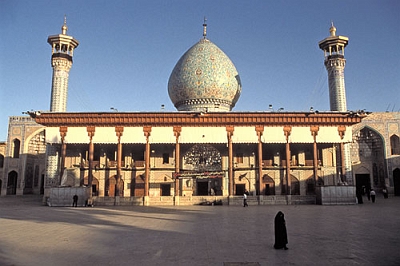
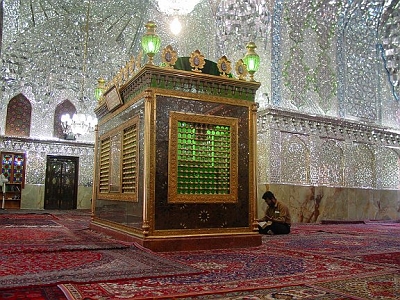
Masjed-e Vakil (Regent's Mosque) can be found at the entrance to the Regent's bazaar. This mosque dates back to 1773; however, it was restored in the 19th century during the Qajar Dynasty and its main interest lies in the haft rangi1 tile work.
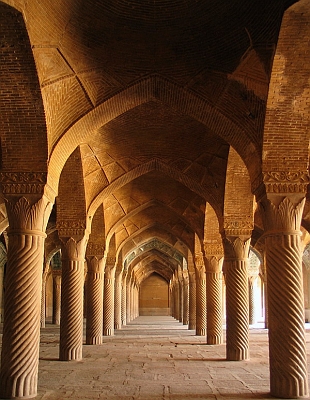
Masjed-e Atigh (Old Friday Mosque) was first built in 894. Virtually all the original structure has disappeared, as a result of various earthquakes and most of the building dates from the 17th century onwards. One interesting feature of this mosque is its house of Korans, a square building with a tower at each corner, set in the centre of the courtyard. Build in the 14th century and restored in the 20th century, it is said to have stored some of the most valuable copies of the Koran.
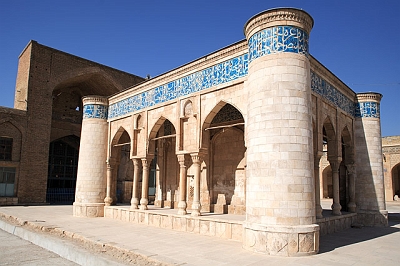
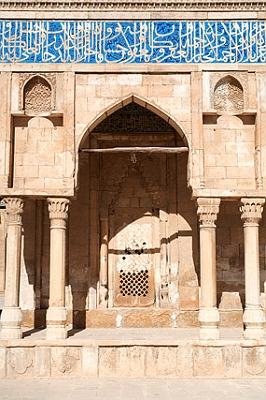
Madresseh-ye Khan, serene theological college, was founded by Emam Gholi Khan, the governor of Fars in 1615, at which time it housed about 100 students. The original building has been damaged extensively by earthquakes, and only the octagonal hall that can be seen from the entrance dates back to the 17th century. The interior is designed in the traditional style with a central court surrounded by arcades which lead into the students' rooms. The south eivan2 has pink and blue tiles, which have been decorated with stylized designs of birds and flowers.
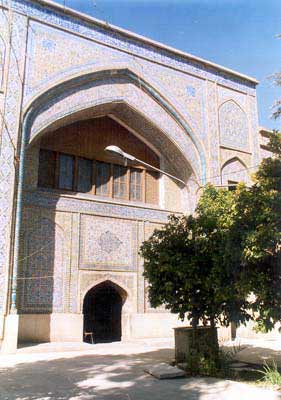
Vakil Bazaar is the main bazaar of shiraz and is located in the historical center of the city. It is thought that the market originally was established by the Buwayhids, and was completed mainly by the Atabaks of Fars, and only was renamed after Karim Khan Zand in the 18th century. The Bazaar has beautiful courtyards, caravanserais, bath houses, and old shops which are deemed among the best places in shiraz to buy all kinds of Persian rugs, spices, copper handicrafts and antiques.
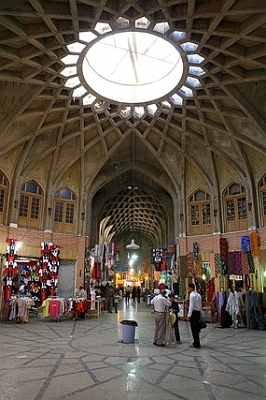
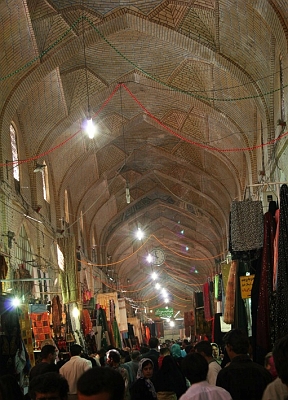
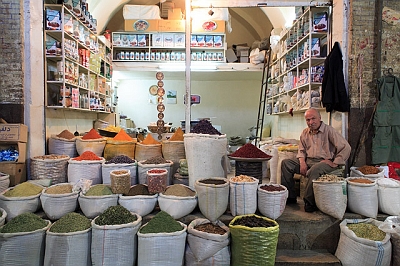
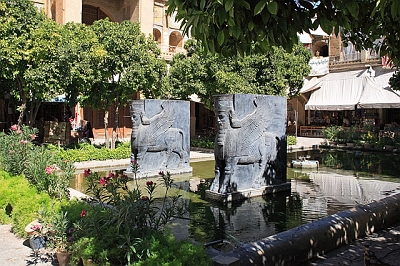
Most of the gardens for which Shiraz was once famous are now long gone, but the town still has a number of parks and gardens, which are particularly pleasant to wander through in the summer. One of the most popular gardens is Bag-e Eram in the north-west of the town, which is famous for its Cyprus trees. The 19th century Qajar palace lies in the middle of this garden, with its own reflecting pool.
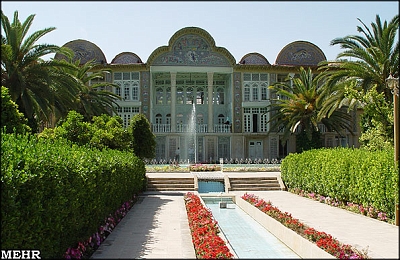
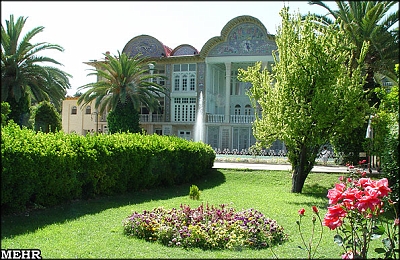
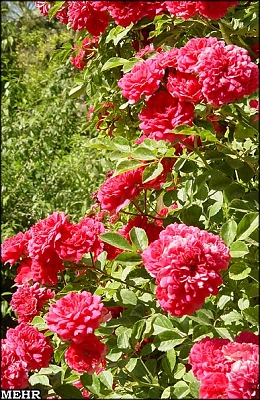
Nasir al-Mulk Mosque located near the famous Vakeel Bazaar, it was built during the Qajar era, and is still in use, although protected by Nasir al Mulk's Endowment Foundation. It was built by the order of Mirza Hasan Ali Nasir al Molk, one of the lords of the Qajar Dynasty, in 1876 and was finished in 1888. It extensively uses colored glass in its facade, and displays other traditional elements such as panj kāseh-i in its design.
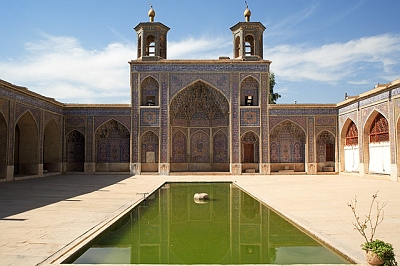
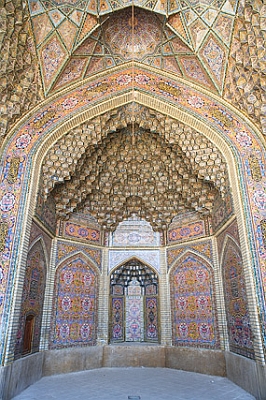
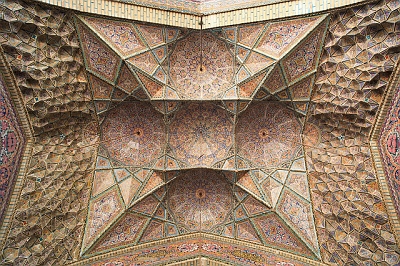
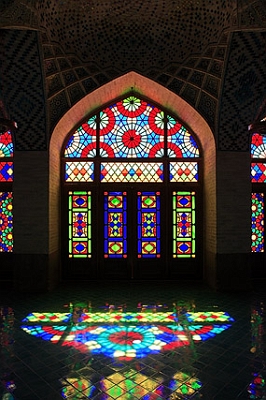
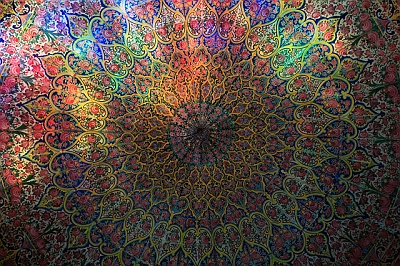
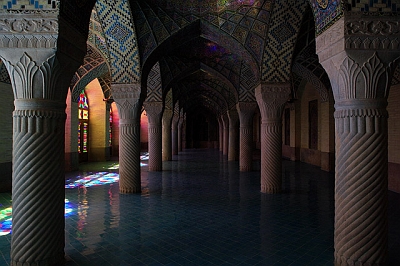
Travelers exiting the city would pass under the gate as a tradition in beseeching protection from the holy book for the course of their trip. An actual hand written copy of the Quran was actually kept on top of the gate. But today roads are built next to it to assure a long life to this one of a kind monument.
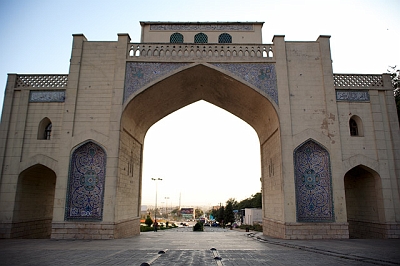
God Bless Shiraz!
Your Comment: |
|
| Rate : | |
| Name : | *Required |
| Email : | *Confidential |
| Comment : | |
 |
|